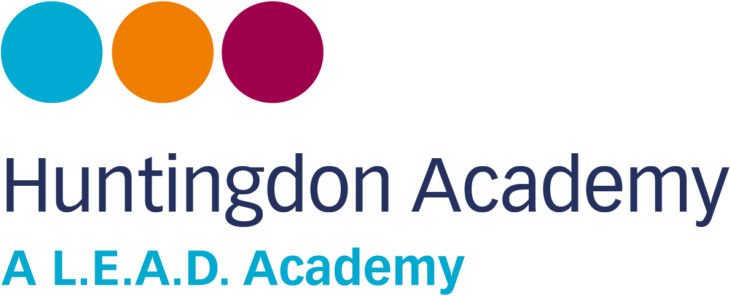Phonics is the cornerstone of the curriculum at Huntingdon Academy as it is a life long skill for all learners. At Huntingdon, we are determined that every single child learns to read. Phonics is taught daily for a minimum of 25 minutes. Children are grouped according to their sound knowledge. Phonics teaching begins early in Foundation 1 and continues until Year 2 where children begin Phase 6. If necessary due to gaps in knowledge, Phonics will continue into Key Stage Two as small group intervention.

Our Phonics lead at Huntingdon Academy is Fern Pithers who has been leading this subject for 4 years. She is a passionate leader of Phonics and continues to grow her expertise so that Phonics is always at its best. It is vital that the approach to Phonics is clear, progressive and consistent at all times.
At Huntingdon Academy, we follow ‘Phonics Adventures’ which is built around the Letters and Sounds programme. Fidelity to this programme is ensured by resourcing, decodable books, planning and lesson structure. We want to make sure Phonics is as engaging as possible, so each phase is accompanied by a character! Children work through the phases with the aim to be secure in phase 3 at the end of Foundation 2 and Phase 5 at the end of Year 1. This ensures they are ready for phase 6 in Year 2. Click on the picture below to see our ‘Phonics Adventure’ handbook to find out more!
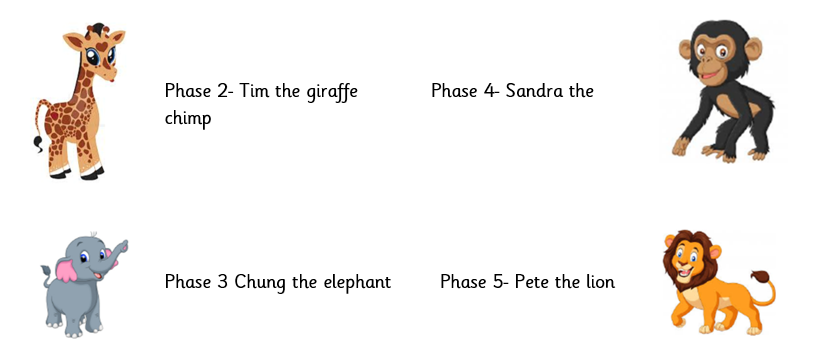
Links to the curriculum
Here are some key documents which underpin Phonics teaching at Huntingdon.
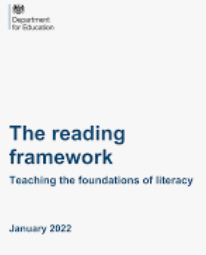

Five key principles of Phonics teaching
The teaching of Phonics is underpinned by these key five principles. They are frequently revisited and discussed during colleague CPD sessions to ensure Phonics practice is consistently at its best. These form the foundations of our whole school Phonics policy.
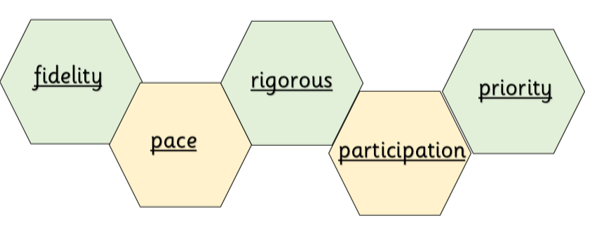
Phonics lessons are fast paced, rigorous and support children in apply their phonological skills in a variety of contexts. All children are active throughout all lessons and children with gaps in their knowledge are identified immediately and supported. Our aim is to keep up not catch up.
Progression of GPCs taught
Below you will find the progression of the sounds taught at Huntingdon.

Tricky words
Tricky words are taught in phases alongside the GPCs.
If the word is decodable at the phase the child is working in, they should decode it. If not, the word is a tricky word and should be taught in the same way as any other phonic decoding with a focus on the tricky element;
eg Oral segmenting with phoneme buttons s a i d
We know /s/ and we know /d/ but the /ai/ is the tricky bit. It says /e/ So the word says s e d (orally segment) Therefore the child needs to lock in the ai part of said.
Resources
All of our resources are used daily and match to our approach in teaching Phonics. Please see below for some examples;
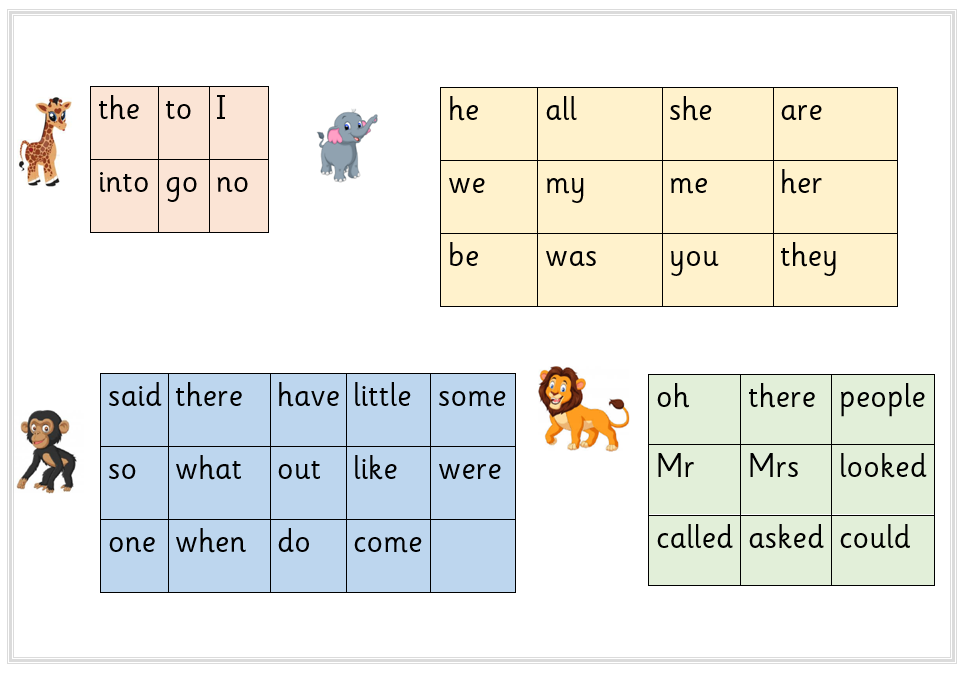

Supporting children at home
We host regular parent workshops to share updates on the programme and ways in which you can help at home. One of the most important things you can do is listen to your child read every day. This will accelerate their progress greatly. The reading diaries also include the sounds your child is currently learning for practice alongside tricky words.
Children are also sent home with high frequency words to practice. Once they are able to read a set, they will be given a new set to practice.
Here is a useful video to help you with the pronunciation of the sounds we teach.
Please speak to your child’s teacher for further support with this or if you have any questions.
Phonics Screening Check
In Year 1, children across the country sit the Phonics Screening check. This is an opportunity to assess children’s segmenting and blending ability in preparation for Year 2. Children will practice these checks during the year so are very familiar with them at the point of testing. These are carried out in early June. Further information meetings will be held in the Spring term for parents.

Glossary
Here are some of the words you may hear your child say when they talk about Phonics
Digraph– 2 letters that make one sound
Trigraph– 3 letters that make one sound
CVC– Consonant, vowel, consonant words for example cat, map etc
Split digraph– A digraph split by a letter for example in the word make
Adjacent consonants– 2 consonants together at the start of a word.

